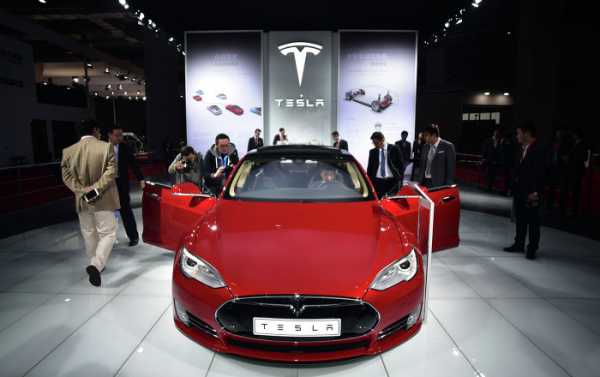
A Utah woman whose Tesla Model S crashed into a fire truck in May is suing the electric car maker, claiming the company overstated the ability of the car’s Autopilot system to keep her safe and avoid an accident.
Heather Lommatzsch filed a suit in a Utah state court Wednesday, claiming at least $300,000 in damages related to her physical injuries and medical bills. She broke her foot as a result of the accident, but the suit claims she sustained “serious physical injuries,” that she lost “the pleasures and enjoyment of life” and that she suffered “physical impairment,” Ars Technica reported.
Lommatzsch indicated in the complaint that “based on conversations with Tesla sales people,” she understood that the car’s safety features “would ensure the vehicle would stop on its own in the event of an obstacle” in the path of the car.
However, the police statement in the aftermath of the May crash noted that Lommatzsch had been on her phone leading up the crash and took no action to prevent it.
Tesla “has always been clear that Autopilot doesn’t make the car impervious to all accidents,” spokesperson Dave Arnold said Wednesday, AP reported. “When using Autopilot, drivers are continuously reminded of their responsibility to keep their hands on the wheel and maintain control of the vehicle at all times.”
The accident happened May 11 in South Jordan, Utah, a suburb of Salt Lake City. The police report noted that Lommatzsch engaged the Autopilot about one minute and 22 seconds before the crash, took her hands off the steering wheel “within two seconds” and didn’t touch the steering wheel for the next 80 seconds, after which the crash happened.
Police suggested that Lommatzsch’s Tesla Model S had been following another vehicle that moved out of her lane, causing the car to accelerate to its preset speed of 60 mph without noticing the stopped cars ahead, including the fire engine that it subsequently collided with, AP noted. She manually hit the brakes a fraction of a second before impact, but by then it was too late.
Of course, Tesla’s cars are equipped with automatic emergency braking, which the company says should detect and respond to objects to minimize danger to the passenger, but the company still recommends drivers not rely on the system completely.
While the company claimed in March 2018, in the aftermath of a deadly crash involving a Tesla Model X SUV, that the Autopilot system “was found by the US government to reduce crash rates by as much as 40 percent,” the National Transportation Safety Board released a damning report recently about that crash, noting the car accelerated just before it impacted a concrete highway barrier.
A startling video by a YouTuber made days after the crash showed him testing his own Tesla’s Autopilot at the site of the crash. In the video, it can clearly be seen that the car turns left, as if the shoulder of the highway exit were another lane, instead of continuing straight on the highway. He has to seize control of the car to avoid it hitting the barrier like the other car did.
In an April 5 report featuring the video, CBS noted that an engineering professor told the news agency that the car computer’s camera had trouble “seeing” the white lines that delineate road lanes “because they aren’t marked clearly.”
Sourse: sputniknews.com






